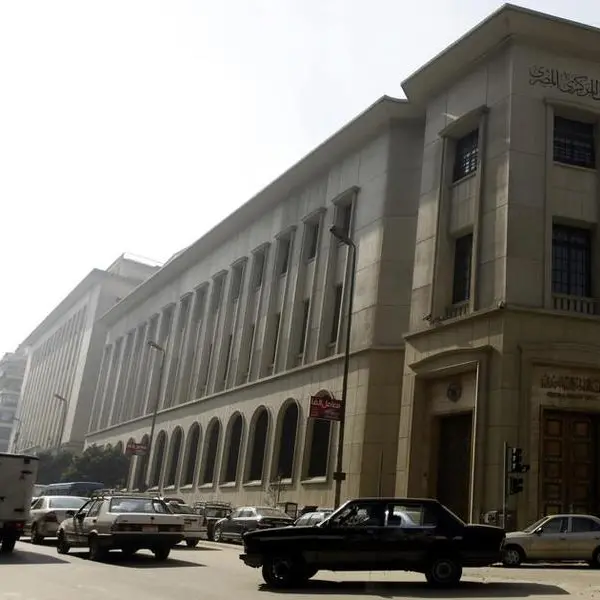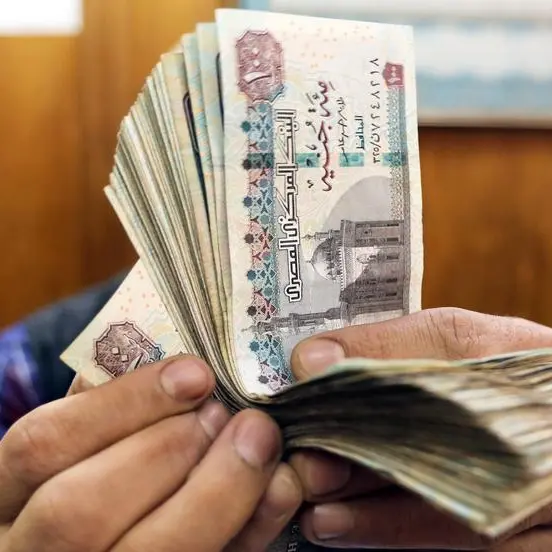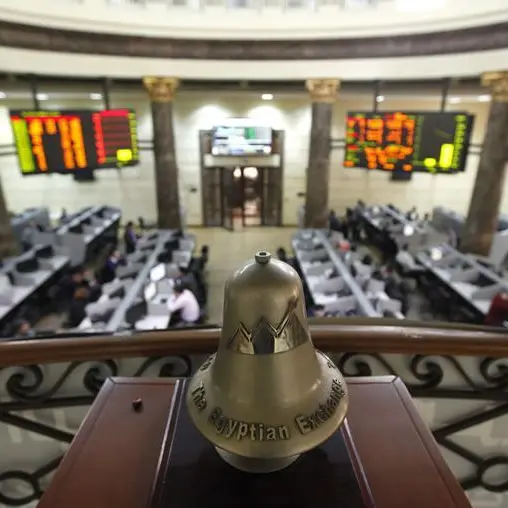Fitch Ratings-Hong Kong-October 16: Fitch Ratings has affirmed Qatar's Long-Term Foreign-Currency Issuer Default Rating (IDR) at 'AA-' with a Stable Outlook.
A full list of rating actions is at the end of this Rating Action Commentary.
KEY RATING DRIVERS
Qatar's 'AA-' ratings reflect a return to budget surpluses, a strong net external and public sector asset position and one of the world's highest ratios of GDP per capita. These strengths are balanced against government debt levels above those of rated peers, hydrocarbon dependence and mediocre scores on measures of governance and doing business.
A standstill has developed in the dispute that began in mid-2017 between Qatar and the Quartet consisting of the UAE, Saudi Arabia, Bahrain and Egypt, after the rupture of mutual trade, financial and diplomatic relations. Kuwait's mediation efforts appear to have stalled, and calls from the US for a resolution have not produced results. Nonetheless, the domestic position of the Qatari government appears stable, and the current diplomatic stance of the US limits the risks of military confrontation or a blockade hitting Qatar's gas exports, in our view. This is notwithstanding media reports in June of Saudi Arabia threatening military action over Qatar's purchase of a Russian missile system.
We forecast the general government surplus at 4.7% of GDP in 2018 from a deficit of 2.9% of GDP in 2017, including the estimated investment income on public sector external assets, as the recovery in hydrocarbon revenue outpaces spending. In our forecast, overall spending growth is led by a 20% rebound in capital spending, which had slipped in 2017 due to import disruptions related to the Quartet's actions against Qatar. The fiscal surplus was around QAR7 billion (2.1% of GDP) in 1H18, according to preliminary data and excluding estimated investment income.
We expect the annual fiscal surplus to widen slightly to 5.1% of GDP in 2019, before moderating to 3.3% of GDP in 2020. This is in spite of our baseline assumption that Brent prices will moderate to an average of USD65/bbl in 2019 and USD57.5/bbl in 2020 from an average of USD70/bbl in 2018. Our forecast reflects the fact that Qatar's gas exports are priced against a three- to six-month average of the oil price and the fact that the dividend of Qatar Petroleum (QP) is paid into the budget with a lag of up to one year. Our forecasts assume implementation of excise tax from the beginning of 2019 and of VAT from 2H19 (both delayed due to the Quartet's boycott) and broadly flat spending in real terms. If Brent were USD10/bbl above our baseline, the fiscal surplus could be 3pp-4pp wider.
There are prospects for medium-term improvements to the public finances. Government capital spending will peak in 2018-2020, at around QAR100 billion (USD27 billion) per year, and is likely to decline afterwards, even if (as we expect) the government adds some new projects to the pipeline in order to sustain non-oil economic activity. This should help offset the fiscal effect of additional capital spending by QP in 2020-2022 related to the North Field expansion. It should also help offset the risk of some costs of the Quartet's embargo crystallising on the government budget with a lag, for example, in the form of support to the private sector and government-related entities, higher defence spending or inflation of the cost of development projects.
We estimate that sovereign net foreign assets (reserves plus other government assets less external debt) were USD241 billion (144% of GDP) in 2017, down from USD251 billion in 2016 but still far above most 'AA' and 'A' peers. The decline was driven by a reduction in official Central Bank reserves in 2017 to USD14 billion, down from USD31 billion at end-2016. Central Bank reserves have partially recovered, to USD25 billion at end-June 2018. We estimate other government external assets at around USD262 billion as at end-2017, little changed from 2016 and mainly in the Qatar Investment Authority (QIA). Strong asset market returns in 2017 are estimated to have offset much of the impact on QIA external assets from repatriating liquidity into Qatar's domestic banks.
We expect government debt at around 58% of GDP by end-2018, including around 1% of GDP for domestic T-bills and 7% of GDP for government overdrafts with local banks. This is well above the 'AA' median level of around 40% of GDP. The government borrowed from domestic banks in 2017, while maintaining government and QIA deposits in them. In our view, this reflected the government's desire to avoid drawing down on the QIA or borrowing abroad in an unfavourable external financing environment, resulting in a situation where broader public sector deposits effectively funded bank lending to the government.
Under our current forecasts, Qatar will not have net financing requirements in 2018-2020, allowing it to use some of the proceeds of the USD12 billion international bond issue in April 2018 to bolster reserves or reduce domestic borrowing. We assume that the government will refinance domestic maturities as they come due and that overdrafts stay at end-2017 levels.
The country's large banking sector (with assets of 200% of GDP), is a source of potential contingent liabilities for the sovereign, in our view. The sector relies heavily on non-resident funding and has concentrated exposures, including to a weak domestic real-estate sector, which had been facing falling prices and overcapacity even before the Quartet's economic boycott. The central bank's real-estate price index was down by 16.6% yoy as of June 2018. The CPI sub-index for housing expenditure was down by 3.3% as of August 2018, reflecting falling rents. Nevertheless, for now, banking sector profitability is sufficient to absorb foreseeable pressure on funding costs and asset quality, and capitalisation levels remain adequate.
Around USD16 billion in non-resident funding has flowed back into the banking system since November 2017, after falling by USD30 billion in June-October 2017, mainly due to withdrawals of deposits by Saudi Arabia and UAE-based clients. A return of non-resident funding has allowed the public sector to pare back its liquidity assistance to the banking sector by USD11 billion in January-August 2018, from cumulative injections of USD40 billion in June-December, consisting mainly of placements by the Central Bank, the Ministry of Finance, and the QIA.
Over 2018-2020, we expect GDP growth to be driven by expansion in the non-hydrocarbon sector, which will slow to 3% by 2020 from 4% in 2018, as the impulse from high but peaking government capital spending fades. On the hydrocarbon side, we expect broadly flat output after maintenance-related shutdowns last year. Resolution of delays at the Barzan gas project could add production of gas for local consumption in 2019-2020. Composition of growth might shift beyond 2023, when the North Field expansion promises a 20% increase in hydrocarbon production just as a wind-down of government capital spending clouds the non-oil outlook.
DATA LIMITATIONS
Qatar does not publish data on its International Investment Position (IIP). In particular, there is no disclosure on the size, composition and returns of government external assets (mostly relating to the QIA). Fitch produces its own estimates of Qatar's IIP figures based on data from the Bank of International Settlements, Qatar's depository corporations survey and Qatar's fiscal and balance of payments data. The estimates of Qatar's government external assets are derived by compounding the government's investments abroad (from balance of payments statistics) using assumptions about returns and asset allocations.
SOVEREIGN RATING MODEL (SRM) and QUALITATIVE OVERLAY (QO)
Fitch's proprietary SRM assigns Qatar a score equivalent to a rating of 'A' on the Long-Term Foreign-Currency (LT FC) IDR scale.
In accordance with its rating criteria, Fitch's sovereign rating committee decided not to adopt the score indicated by the SRM as the starting point for its analysis because the SRM output has migrated from 'A+' to 'A', but in our view this is only a temporary deterioration.
Fitch's sovereign rating committee adjusted the output from the SRM to arrive at the final LT FC IDR by applying its QO, relative to rated peers, as follows:
- Public finances: +1 notch, to reflect the large government deposits held with local banks as well as other government assets.
Fitch's SRM is the agency's proprietary multiple regression rating model that employs 18 variables based on three-year centred averages, including one year of forecasts, to produce a score equivalent to a LT FC IDR. Fitch's QO is a forward-looking qualitative framework designed to allow for adjustment to the SRM output to assign the final rating, reflecting factors within our criteria that are not fully quantifiable and/or not fully reflected in the SRM.
RATING SENSITIVITIES
The main factors that could, individually or collectively, lead to positive rating action are:
- A marked and sustained reduction in public debt.
- A substantial improvement in Qatar's external balance sheet.
The main factors that could, individually or collectively, lead to negative rating action are:
- An escalation of tensions between Qatar and its neighbours that threatens economic and financial stability.
- A further increase in public debt, for example due to renewed widening of fiscal deficits or a materialisation of large contingent liabilities.
- A deterioration in Qatar's external balance sheet.
KEY ASSUMPTIONS
Fitch assumes that:
- Brent crude prices will evolve in line with its September 2018 Global Economic Outlook.
- Natural gas prices will evolve broadly in line with oil prices.
- Qatar will continue to be able to export hydrocarbons and trade with countries that are not currently party to its dispute with neighbours.
- The majority of QIA assets can be monetised over time to meet liquidity needs as they arise.
The full list of rating actions is as follows:
Long-Term Foreign-Currency IDR affirmed at 'AA-'; Outlook Stable
Long-Term Local-Currency IDR affirmed at 'AA-'; Outlook Stable
Short-Term Foreign-Currency IDR affirmed at 'F1+'
Short-Term Local-Currency IDR affirmed at 'F1+'
Country Ceiling affirmed at 'AA'
Issue ratings on long-term senior unsecured foreign-currency bonds affirmed at 'AA-'
Contact:
Primary Analyst
Krisjanis Krustins
Director
+852 2263 9831
Fitch (Hong Kong) Limited
19/F Man Yee Building
68 Des Voeux Road Central
Hong Kong
Secondary Analyst
Ed Parker
Managing Director
+44 20 3530 1176
Committee Chairperson
Stephen Schwartz
Senior Director
+852 2263 9938
Media Relations: Peter Fitzpatrick, London, Tel: +44 20 3530 1103, Email: peter.fitzpatrick@fitchratings.com.
Additional information is available on
Applicable Criteria
Country Ceilings Criteria (pub. 19 Jul 2018)
Sovereign Rating Criteria (pub. 19 Jul 2018)
Additional Disclosures
Dodd-Frank Rating Information Disclosure Form
Solicitation Status
Endorsement Policy
ALL FITCH CREDIT RATINGS ARE SUBJECT TO CERTAIN LIMITATIONS AND DISCLAIMERS. PLEASE READ THESE LIMITATIONS AND DISCLAIMERS BY FOLLOWING THIS LINK:
Copyright 2018 by Fitch Ratings, Inc., Fitch Ratings Ltd. and its subsidiaries. 33 Whitehall Street, NY, NY 10004. Telephone: 1-800-753-4824, (212) 908-0500. Fax: (212) 480-4435. Reproduction or retransmission in whole or in part is prohibited except by permission. All rights reserved. In issuing and maintaining its ratings and in making other reports (including forecast information), Fitch relies on factual information it receives from issuers and underwriters and from other sources Fitch believes to be credible. Fitch conducts a reasonable investigation of the factual information relied upon by it in accordance with its ratings methodology, and obtains reasonable verification of that information from independent sources, to the extent such sources are available for a given security or in a given jurisdiction. The manner of Fitch's factual investigation and the scope of the third-party verification it obtains will vary depending on the nature of the rated security and its issuer, the requirements and practices in the jurisdiction in which the rated security is offered and sold and/or the issuer is located, the availability and nature of relevant public information, access to the management of the issuer and its advisers, the availability of pre-existing third-party verifications such as audit reports, agreed-upon procedures letters, appraisals, actuarial reports, engineering reports, legal opinions and other reports provided by third parties, the availability of independent and competent third- party verification sources with respect to the particular security or in the particular jurisdiction of the issuer, and a variety of other factors. Users of Fitch's ratings and reports should understand that neither an enhanced factual investigation nor any third-party verification can ensure that all of the information Fitch relies on in connection with a rating or a report will be accurate and complete. Ultimately, the issuer and its advisers are responsible for the accuracy of the information they provide to Fitch and to the market in offering documents and other reports. In issuing its ratings and its reports, Fitch must rely on the work of experts, including independent auditors with respect to financial statements and attorneys with respect to legal and tax matters. Further, ratings and forecasts of financial and other information are inherently forward-looking and embody assumptions and predictions about future events that by their nature cannot be verified as facts. As a result, despite any verification of current facts, ratings and forecasts can be affected by future events or conditions that were not anticipated at the time a rating or forecast was issued or affirmed.
The information in this report is provided "as is" without any representation or warranty of any kind, and Fitch does not represent or warrant that the report or any of its contents will meet any of the requirements of a recipient of the report. A Fitch rating is an opinion as to the creditworthiness of a security. This opinion and reports made by Fitch are based on established criteria and methodologies that Fitch is continuously evaluating and updating. Therefore, ratings and reports are the collective work product of Fitch and no individual, or group of individuals, is solely responsible for a rating or a report. The rating does not address the risk of loss due to risks other than credit risk, unless such risk is specifically mentioned. Fitch is not engaged in the offer or sale of any security. All Fitch reports have shared authorship. Individuals identified in a Fitch report were involved in, but are not solely responsible for, the opinions stated therein. The individuals are named for contact purposes only. A report providing a Fitch rating is neither a prospectus nor a substitute for the information assembled, verified and presented to investors by the issuer and its agents in connection with the sale of the securities. Ratings may be changed or withdrawn at any time for any reason in the sole discretion of Fitch. Fitch does not provide investment advice of any sort. Ratings are not a recommendation to buy, sell, or hold any security. Ratings do not comment on the adequacy of market price, the suitability of any security for a particular investor, or the tax-exempt nature or taxability of payments made in respect to any security. Fitch receives fees from issuers, insurers, guarantors, other obligors, and underwriters for rating securities. Such fees generally vary from US$1,000 to US$750,000 (or the applicable currency equivalent) per issue. In certain cases, Fitch will rate all or a number of issues issued by a particular issuer, or insured or guaranteed by a particular insurer or guarantor, for a single annual fee. Such fees are expected to vary from US$10,000 to US$1,500,000 (or the applicable currency equivalent). The assignment, publication, or dissemination of a rating by Fitch shall not constitute a consent by Fitch to use its name as an expert in connection with any registration statement filed under the United States securities laws, the Financial Services and Markets Act of 2000 of the United Kingdom, or the securities laws of any particular jurisdiction. Due to the relative efficiency of electronic publishing and distribution, Fitch research may be available to electronic subscribers up to three days earlier than to print subscribers.
For Australia, New Zealand, Taiwan and South Korea only: Fitch Australia Pty Ltd holds an Australian financial services license (AFS license no. 337123) which authorizes it to provide credit ratings to wholesale clients only. Credit ratings information published by Fitch is not intended to be used by persons who are retail clients within the meaning of the Corporations Act 2001
Fitch Ratings, Inc. is registered with the U.S. Securities and Exchange Commission as a Nationally Recognized Statistical Rating Organization (the "NRSRO"). While certain of the NRSRO's credit rating subsidiaries are listed on Item 3 of Form NRSRO and as such are authorized to issue credit ratings on behalf of the NRSRO (see











